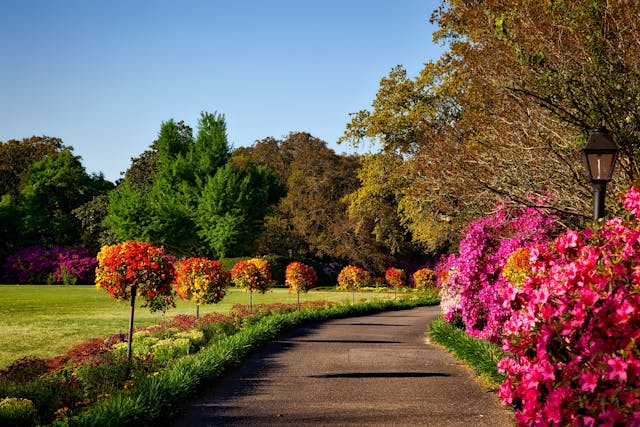My clientele is really diverse. I’ve collaborated with a farmer, a fintech entrepreneur, an American interior designer, and a French herbalist just this year. Even though my customers’ backgrounds and interests might range greatly, there are instances when I can identify small tendencies in the requests they make. One such trend that interests me is the rise in requests from homeowners wanting their gardens to seem less “designed.” When I ask them to clarify, their responses are rather consistent: they don’t want things to seem too planned or staged and instead want the garden to be laid back, even casual.

Sometimes it’s because they want a less tidy, more natural-looking, and wildlife-friendly garden than what can be found in more formal garden designs. However, it’s also often done since they want the garden to be natural and unobtrusive. These two elements don’t have to conflict with one another or take away from the importance of excellent design.
It is imperative that each garden design be tailored to its unique environment, the home and structures to which it is tied, and most importantly, the customer. If you want to tamper with a classic, then don’t do it. As much as the next person, I like all-white gardens, and in a big formal garden, I would never advise against using the stately, time-tested mix of topiary and hedging. Furthermore, I disagree with the notion that letting nature run wild in a garden is the best course of action.
Instead, a thoughtful strategy for creating the “undesigned” garden where it makes sense would be to create a place that seems thoughtful, sensitive to the setting, yet organized such that the designer’s influence isn’t immediately apparent. Here are some ideas on how to make it happen.
Consider the definition of a “designed” place.
Take a look at the gardens you find inspiring. Is there a certain style you find more pleasing than others? Could you explain what it is? The current world is full with pictures, and part of a designer’s duty is to assist their customer in pinpointing precisely what they like and dislike. When I start a new project, one of the first things I do with my clients is sit down and browse over moodboards and reference photos together, attempting to figure out what exactly they appreciate about that image. Is it the lighting, the arrangement of the plants, or anything else about the garden that they want to replicate in their own area? Before we speak about layouts and design, these factors are crucial to establish since they all contribute to how your garden feels and looks when you spend time in it.

Good design need not be immediately apparent.
A garden that is completely undesigned may seem disorganized. You probably want room for other things in your garden as well, even if you love the sense of nature taking over. It’s probably not someplace you would really like to spend your leisure time—a disorganized, haphazard garden.
The repetition that draws our attention to a landscape is what gives areas their aesthetic appeal. This is achieved by designers using shape, color, and texture as well as the hard landscaping’s lines and tones. This is a crucial step in designing a garden that is enjoyable to spend time in. To do this, make sure the areas are both spacious and pleasant for the purposes for which they will be used. You will have greater creative flexibility with the other elements of the design after you have established the fundamentals of the garden and clearly defined your zones.
Consider your options carefully while choosing plants, and try not to too restrict your taste.
As new trends emerge and fade throughout time, so do our collective “tastes” and plants go out of style. Overcultivating or oversimplifying your planting is a surefire way to make your garden feel overly designed. For example, a popular combination in the past ten or so years has been the soft, feathery grasses of Stipa tenuissima contrasted with the purple stems of Verbena bonariensis or Salvia caradonna. Nowadays, planting multi-stemmed alemanchiers in a hakonechloa bed is also a common practice. These stylized choices are perfect for certain individuals and settings, but if you’re going for a more relaxed look, consider using a somewhat more diversified palette (don’t forget how important repetition is!).
Reclaimed materials will add personality to your landscape.
Your whole garden will feel brand-new if you choose to pave with one variety of big format, recently manufactured sandstone. Although the stone will wear, a more understated design might use different materials and forms, such as sandstone and repurposed brick, or space out cobbles and clay pavers.
Additionally, consider the various spaces and your intended uses for them. Often, the appropriate material will be used in the appropriate setting. For example, place Victorian-style tiles on a pathway leading to a Victorian home, or locate a clay paver that complements the brick color of your addition. Excessive attempts at becoming unique in design sometimes result in a very overdone appearance.

Not to mention, stay away from trends.
Consider what looks well on you, your home, and the regional dialect. This will help you create a garden that is real, well-designed, and doesn’t prioritize style over substance. It will also help you create a place that will last over time.




